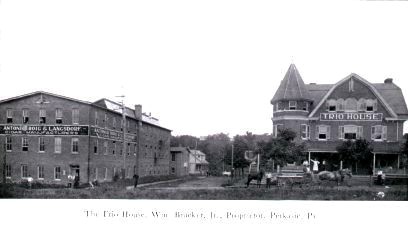 |
| Roig & Langsdorf Cigar factory (left) and the Trio House (a hotel that opened in1902) were located at 8th and Chestnut Streets in Perkasie. Roig's opened in 1892 and closed in 1926, A box factory for packaging the cigars adjoined the building on Chestnut Street. |
Before World War 1 (1917), there were more that ten cigar factories in the Perkasie - Sellersville area. Shops in homes called "buck-eye" shops were also set up in homes to make cigars on a small scale.
H.E. Snyder Cigar Co.
A company that became known nationally for quality cigars in Perkasie was the H.E. Snyder Cigar Co. The growth of the Perkasie cigar industry will be examined through the story of this company.
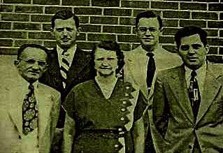 |
 |
|
| The H.E. Snyder family. | Employees of the H.E. Snyder Cigar Co. |
The H.E. Snyder Cigar Co. was originally started by Horace E. Snyder on a small scale. Mr.Snyder and his family worked together to make at there home. He would pack his cigars in a suitcase and peddle them at stores close enough for him to ride his bike. Mr. Snyder contracted with E. Kleiner's & Co. (6th & Arch Streets in Perkasie) to make the popular White Ash cigar and at the same time he took the job of foreman for E. Kleiner and Co. Mr. Snyder left the employ of E. Kleiner and rented the former Roig Cigar Factory until his own new factory on Fourth Street in Perkasie was complete. By 1930 five additions had been added to the factory with the labor force numbering 400. At that time two White Ash cigars sold for 5 cents and later 5 cents a piece.
In 1930 a automatic wrapping machine was installed. It wrapped the finished cigars in cellophane and sealed the ends at a rate of 40,000 in eight hours. The machine was coordinated with the automatic banding machines and the combined unit banded and cellophaned cigars at the same rate as ten people. In 1930 the plant employed 250 people in the Perkasie Plant and in 1929 produced 30,000,000 cigars. The November 19, 1930 Central News reported that the factory was making a million cigars every 10 days for the holiday rush.
In 1936 due to increased production demands H.E. Snyder was forced to reduce the number of employees and make machine made cigars.With the modern manufacturing techniques, they produced around 6000 cigars a day. The Perkasie factory had twelve regular machines and two long filler machines. Other varieties of Perkasie cigars were known as Senate Club, Izaak Walton, Pastime, and Panama Ribbon. Contracts with three other plants located in Red Lion, PA. and McSherrystown, PA. helped to meet the demand for White Ash cigars. By that time the White Ash cigars were sold for 25 cents, 15 cents and also 10 cents throughout the United States. Chewing tobacco was also made with a mixture of licorice, molasses, and water, packaged and sold.
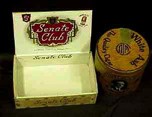 |
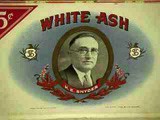 |
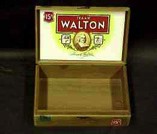 |
||
| Senate Club cigar box and White Ash can of cigars. | The famous White Ash cigar -inside box lid design. | Walton cigar box. |
In 1962 the last cigar factory was closed in Perkasie and went to Scranton, Pa. The building still remains in good condition and and houses several businesses at this time. It is located on Fourth Street between Walnut and Spruce Streets and is easily recognizable as the building sign has been maintained.
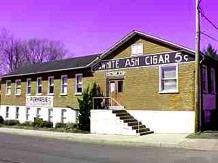 |
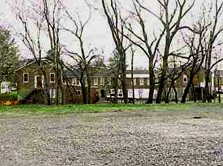 |
|
| These two photos show the factory as it appears today. Several businesses are located in the building in 2000, | These are the additions to the back of the factory above.There were four additions added on to the back of this factory. |